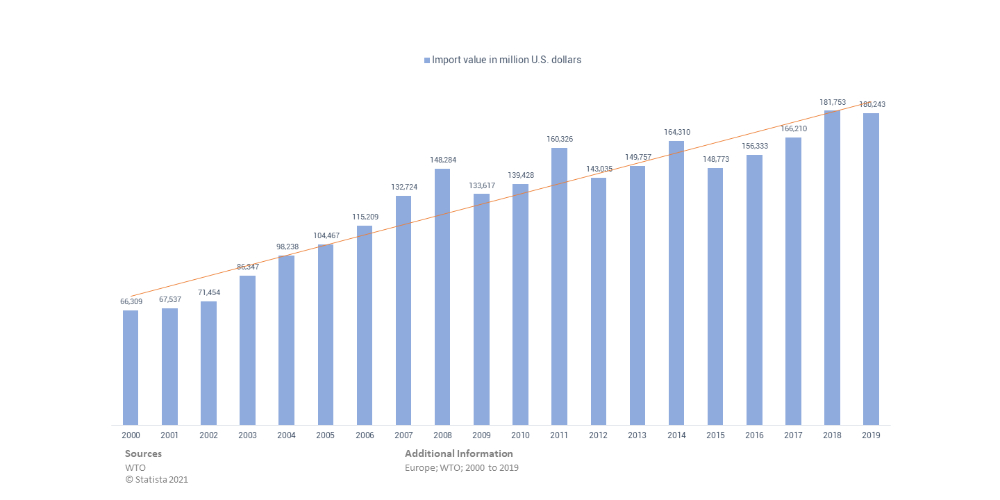The European Union (EU) is a political and economic union of 27 member states that are mainly located in Europe. The union has a landmass of 4,233,255.3 km which is almost 1,634,469.0 in sq mi and an estimation of a population of approximately 447 million people. An internal single market is established through a standardized system of laws applicable to all Member States in those cases, and only in cases where the States have agreed to act as one. The European Union’s policies aim to make sure the free movement of workers, goods, services, and capital within the economic area. The Inner Six were the founding members of the European Communities: Belgium, France, Italy, Luxembourg, the Netherlands, and West Germany. Communities and their successors have grown as a result of the accession of 21 new member states and their division of powers. The Treaty of Lisbon, the most recent major amendment to the European Union’s constitutional foundation, entered into force in 2009. The United Kingdom will be the only member state to exit the European Union in 2020. With this being said, the EU is a leading market for the fashion industry. The high purchasing power leads to a high number of clothing import activities from overseas clothing manufacturers. In this article, we will discuss how big are the EU clothing imports in 2019.
Facts about EU imports
The EU implements trade defense measures such as anti-dumping measures, anti-subsidy measures, or safeguards when EU industry is harmed by dumping or reduced imports. Following are some of the facts about the imports of the EU. They are also connected to the imports of clothing in discussion
- EU import duties are among the lowest in the world.
- The European Union’s market is the most inclusive to underdeveloped nations. Fuels are not included, with the EU importing more from LDCs than the United States, Canada, Japan, and China combined.
- It is not only exports that are essential for economic growth and job creation, but imports are also increasing. Two-thirds of EU imports are raw materials, intermediary goods, and components essential to our companies’ production processes. The share of imports in EU exports has risen by more than half since 1995, reaching 13%.

Imports of clothing and textile in 2019
The trade of 1932 Euros has been made by the EU in 2019. A large chunk of it has been related to the clothing trades, especially imports. In 2019, the EU exported textiles and clothing worth €61 billion and imported €109 billion. The European Union imported more than €80 billion of clothing, mainly from garment manufacturing companies in China, Bangladesh, and Turkey. The European Commission works to ensure equal opportunities in international trade. It does this by implementing WTO agreements at the multilateral level and through free trade agreements at the bilateral level.
According to various sources the main being WTO, there have been many years when the EU clothing imports were over the roof but due to some misconceptions people think that 2019 was the year with the highest imports.
But the concept and import are different. It went down a bit compared to 2018. But some of the critics are also right about the import being great in numbers if the year 2019 is compared with the year 2002, 2015, and 2016. The year 2019 had imports of almost 180,243 Million Dollars but the years 2002, 2015, and 2016 showed the values of 71,451, 148,773, and 156,333 respectively. But if we see the trend of the imports, 2019 has been given the right number of imports as the trends have been lately. There has nothing been extraordinary. If we compare 2019 to 2018 the number of imports went down a little bit. There is a difference of almost 1,510 million dollars.
Leading role in EU textile and clothing sector
Fashion design, inventiveness, and strong brand names, particularly in high-end industries, are credited with the EU textile and clothing sector’s leadership. The textile and clothing industry is a global one with ever-increasing trade flows. Better market access is becoming more important in emerging markets as new service applications and uses in aerospace, healthcare, construction, automotive, and personal protection emerge.
European Union regulations of origin in the textile sector specify several stages in the production processes from fibers to yarns, fabrics, and confectioned products. Rules are descriptive and based on procedures. Operators have a choice between different processes. The processes are aimed at ensuring value-added operations and synergies with the business partners.
Conclusion
The highest rate of imports for the EU is the textile sector as the populations of the involved country and their demand is directly proportional to the import of the clothing. The textile ecosystem faces strong international competition. Given the high amount of imported products and the need to level the playing field, it is critical to ensure market supervision and completely eradicate market access barriers in third countries. The Commission follows the application of the WTO Agreement on Technical Barriers to Trade and negotiates the removal of technical barriers within the context of the WTO.




